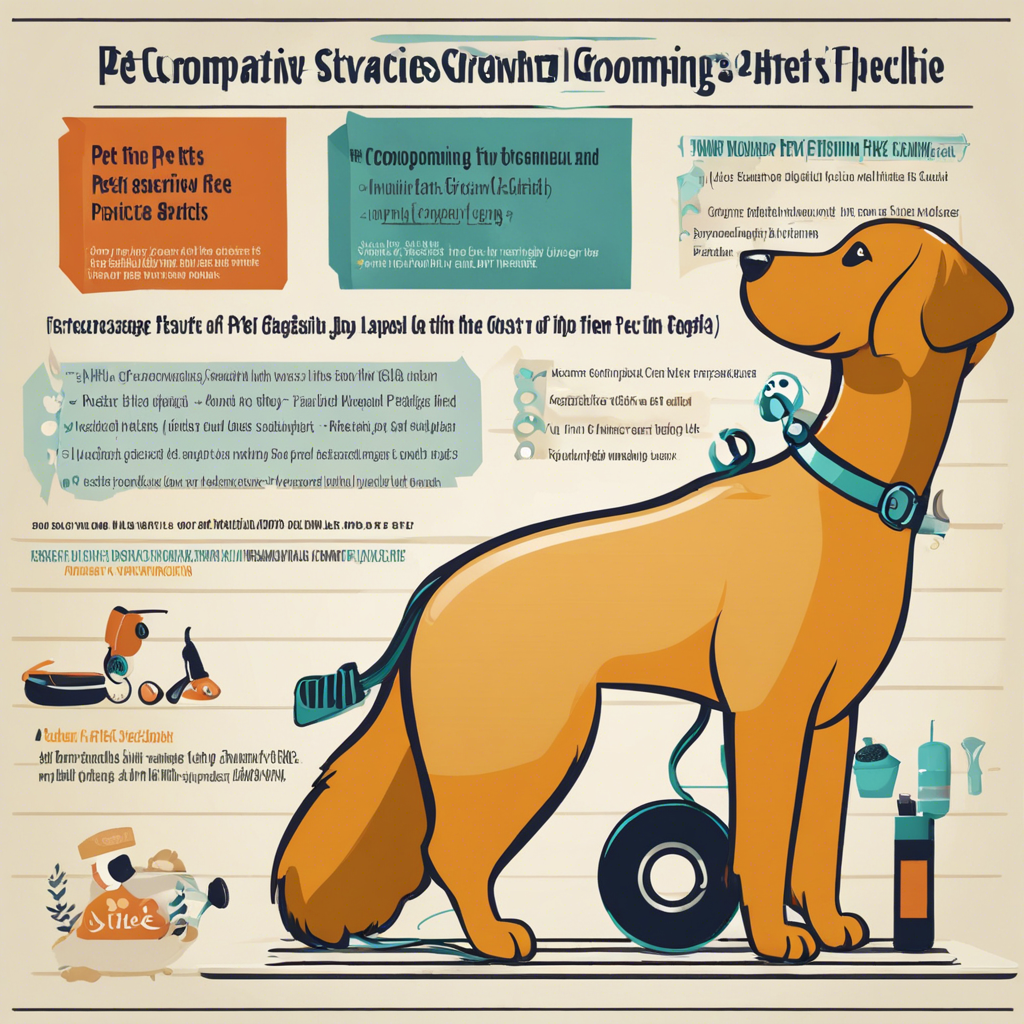A Comparative Study: Pet Grooming Practices and Pet Health
Explore the impact of various pet grooming techniques on animal health and well-being.
Pet grooming is an essential aspect of pet ownership, contributing to the physical and mental well-being of our furry companions. This article delves into a comparative study of pet grooming practices, examining their effects on pet health and the potential benefits for different animal species. By understanding the science behind grooming techniques, pet owners and caregivers can make informed decisions to promote the overall wellness of their pets.
Proper grooming is not just about maintaining a pet’s appearance but also plays a crucial role in preventing various health issues. From reducing the risk of skin infections to improving overall hygiene, regular grooming sessions can significantly impact a pet’s quality of life. This article aims to provide insight into the diverse world of pet grooming, catering to the curious pet owner and the dedicated professional alike.
The Importance of Regular Pet Grooming
Regular grooming sessions offer numerous benefits for pets. It is a vital aspect of preventive care, helping to identify potential health issues at their earliest stages. By examining the skin, coat, ears, and nails during grooming, pet owners can detect any abnormalities and seek veterinary advice promptly.
Additionally, grooming provides an opportunity for pet owners to bond with their animals. The act of grooming can build trust and strengthen the human-animal relationship, making future grooming sessions easier and more enjoyable for both parties. It is essential to create a calm and stress-free environment during grooming to ensure the pet’s comfort and safety.
Grooming Techniques and Their Effects
Brushing and Combing
Brushing and combing are fundamental grooming practices for maintaining a healthy coat and skin. Regular brushing helps remove loose hair, preventing matting and tangles, which can be painful and lead to skin irritation. It also stimulates blood circulation, promoting a healthy coat and reducing shedding. For breeds prone to excessive shedding, regular brushing is crucial to minimize the impact on indoor air quality.
Bathing
Bathing is another important aspect of grooming, but the frequency and method depend on the pet’s breed, coat type, and lifestyle. Over-bathing can strip the skin of its natural oils, leading to dryness and irritation. However, for pets with skin allergies or those exposed to environmental pollutants, regular bathing with appropriate shampoos can provide relief and maintain skin health. Always consult a veterinarian for the best bathing routine and products for your pet.
Tips for effective bathing:
- Use a gentle, pet-safe shampoo.
- Ensure the water temperature is comfortable.
- Thoroughly rinse off all shampoo residue.
Nail Trimming and Ear Cleaning
Nail trimming is essential for maintaining a pet’s comfort and mobility. Overgrown nails can cause pain, affect gait, and even lead to injury. Regular trimming, preferably by a professional groomer or veterinarian, is recommended to ensure proper technique and avoid injury to the quick. Ear cleaning is also crucial, especially for breeds prone to ear infections. Regularly removing excess wax and debris can prevent ear canal blockage and reduce the risk of infections.
Breed-Specific Grooming Considerations
Different pet breeds have unique grooming requirements. Long-haired breeds, such as the Afghan Hound or Persian cat, require more frequent brushing and may need professional grooming services to maintain their coats. Short-haired breeds, like the Labrador Retriever or Siamese cat, have less grooming needs but still benefit from regular maintenance.
Expert Advice and Resources
For comprehensive guidance on breed-specific grooming, consult resources like the American Kennel Club’s Grooming Section, which offers a wealth of information on various dog breeds. The Catster Grooming Guide is a valuable resource for cat owners, providing practical tips and breed-specific advice.
Addressing Common Concerns
Here are some frequently asked questions about pet grooming:
How often should I brush my pet’s coat?
The frequency of brushing depends on the pet’s coat type and length. Long-haired pets may require daily brushing, while short-haired pets can be brushed a few times a week. Regular brushing helps prevent matting and promotes a healthy coat.
Is it necessary to bathe my pet regularly?
The need for bathing varies among pets. Some breeds with oily coats may require more frequent bathing, while others can go several months without a bath. Consult a veterinarian or groomer for breed-specific recommendations.
Can I do nail trimming at home, or should I leave it to the professionals?
Nail trimming can be done at home if you have the proper tools and experience. However, it is a delicate process, and mistakes can lead to pain and injury. Many pet owners prefer to leave nail trimming to professionals, ensuring a stress-free experience for both the pet and owner.
Conclusion: Nurturing Pet Health through Grooming
Grooming is an integral part of pet care, offering numerous health and well-being benefits. From preventing skin issues to strengthening the bond between pets and owners, regular grooming sessions contribute to a happier and healthier pet. By understanding the specific needs of different breeds and implementing proper grooming practices, pet owners can ensure their pets live their best lives.
This comparative study highlights the importance of pet grooming as a preventive measure. By staying informed and seeking professional advice, pet owners can create tailored grooming routines to enhance their pets’ overall health and happiness. Remember, a well-groomed pet is a happy and healthy companion.
External Resources:
1. AKC Grooming Guide – Comprehensive grooming advice for dog owners.
2. Catster Grooming Tips – Cat-specific grooming information and recommendations.
3. ASPCA Pet Grooming Tips – Expert advice on pet grooming for various species.
